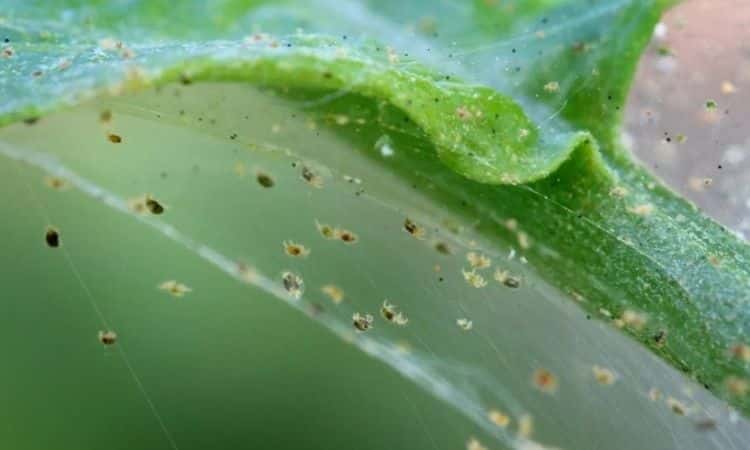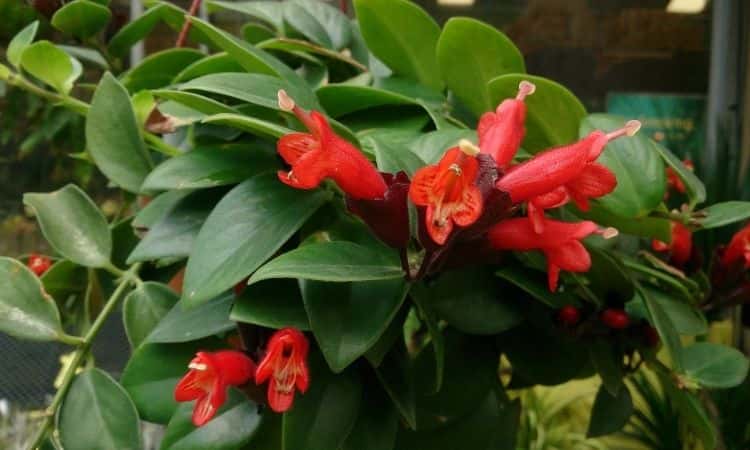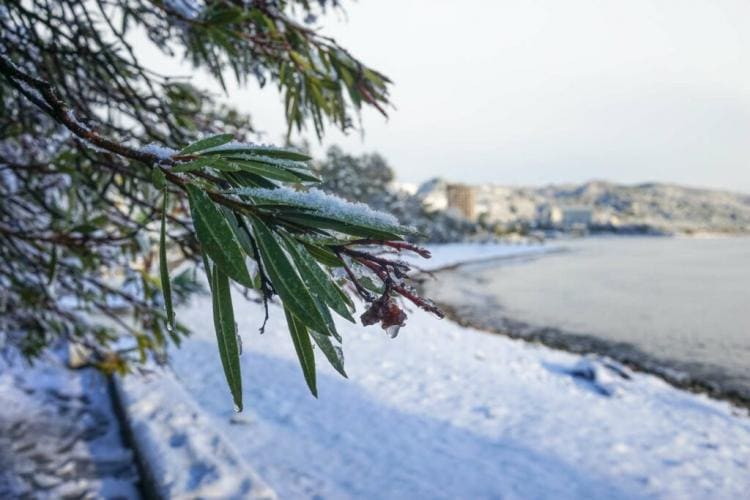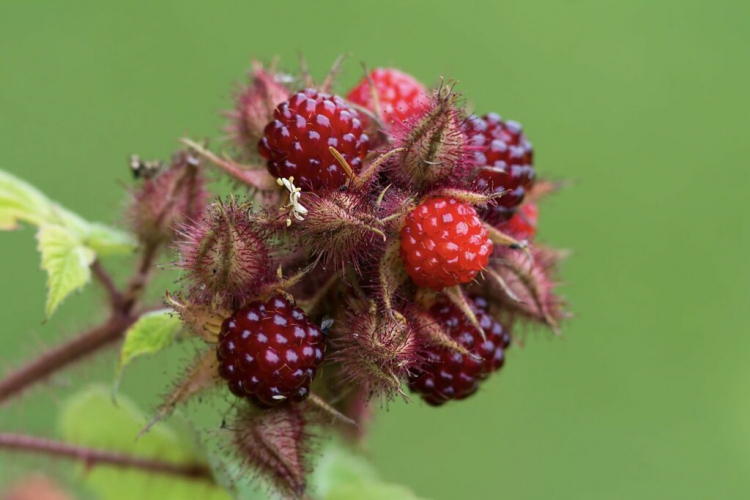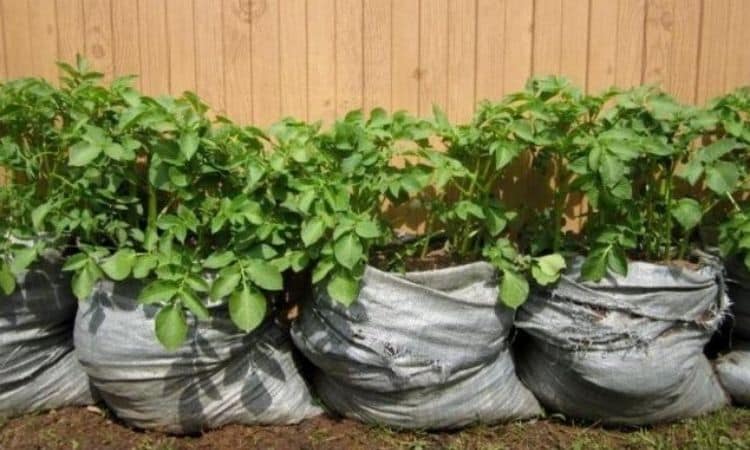Aeschynanthus (Lipstick Plant) – Care Instructions & Propagation
Aeschynanthus (Lipstick Plant) are evergreen herbaceous perennial hanging plants that grow lithophytically (on or in rock) or epiphytically (as sit-on plants) because originally they belong to the tree inhabitants.
The leaves on the hanging shoots are usually shiny and oval. The attractive flowers develop on the tips of the shoots individually, in pairs, or clusters, depending on the species.
The most hanging stems or shoots can be branched or unbranched and can reach a length of up to 60 cm. The tiny seeds of this plant can be found in up to 50 cm long capsule fruits, depending on the species.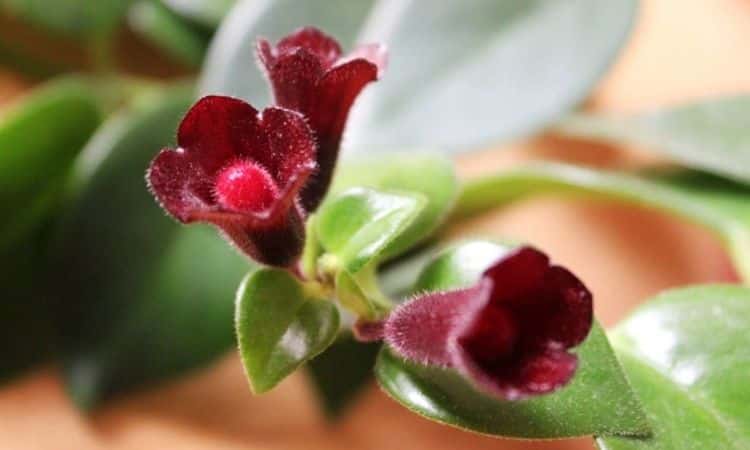
Profile
Table of Contents
- The scientific name is Aeschynanthus.
- Belongs to the family of the gesneria plants.
- The Aeschynanthus is an evergreen hanging plant.
- Grows herbaceous and persistent.
- Needs relatively high humidity.
- Flower color red, orange, and partly yellow.
- Flowering time from June to October.
- Leaves are leathery and evergreen.
- Growth height or shoot length between 50 and 150 cm, depending on the species.
- In winter a little cooler.
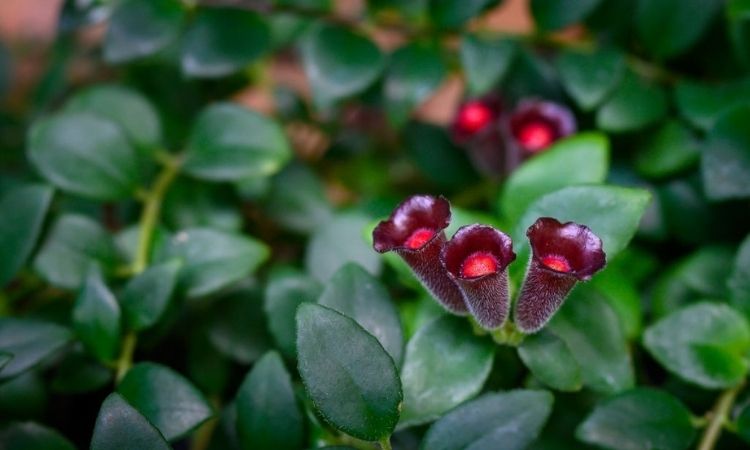
Plants
You can plant the Lipstick Plant all year round. The planter should be rather high and should have appropriate drainage holes so that excess water can drain off without any problems and stagnant moisture and thus rot is avoided. As the lowest layer, fill in appropriate drainage material such as gravel, expanded clay, or clay fragments.
A suitable substrate is filled onto the drainage and the plant is placed. Then fill up to about 1 cm below the edge of the pot with a substrate and press it lightly. Under no circumstances should the soil be pressed too firmly, because the roots will not be aerated sufficiently. After planting the Aeschynanthus is watered abundantly.
Location
All species of the genus Aeschynanthus thrive well in summer as well as in winter in light of the semi-shady and warm locations at temperatures between 20 and 25 degrees, although somewhat cooler temperatures are more recommended in winter. Direct sunlight should be avoided as well as too dark locations.
Light shade in the morning and evening hours is optimal. Draughts should also be avoided if possible. High humidity is important, which is why these plants are particularly suitable for rooms with a more humid climate such as the bathroom, the winter garden, or a greenhouse.
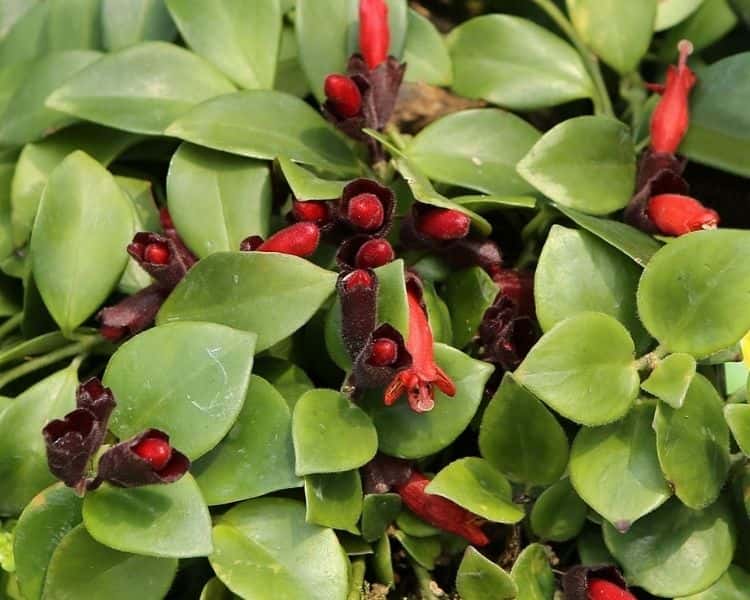
Substrate
- The substrate should be air-permeable and slightly acidic.
- A pH value between 5 and 6 is good.
- Peat moss with the addition of perlite or vermiculite is very suitable.
- Both in equal parts.
- This ensures that the roots are sufficiently aerated.
- A good alternative to this mixture is coarser peat moss.
- This can be used without any additives.
- You can also use normal potting soil.
- This can be loosened up by adding clay granules.
- Or you can mix ready-made substrates with swamp moss and fiber peat.
- Commercially available bromeliad is also possible.

Pouring and fertilizing
The Aeschynanthus should only be watered moderately, but the root ball must always be slightly moist. During flowering, more watering may be necessary. The substrate should not or only slightly dry up in the meantime. However, species with the firm and thick leaves can cope well with drought for a short time. Only lime-free and room-warm water should be used for watering, preferably rainwater. Stagnant moisture must be avoided at all costs.
Fertilization can be done from March to August with low-dose nitrogen and lime fertilizer, for example, a fertilizer for flowering plants. Freshly repotted plants should not be fertilized for the first 6-8 weeks.
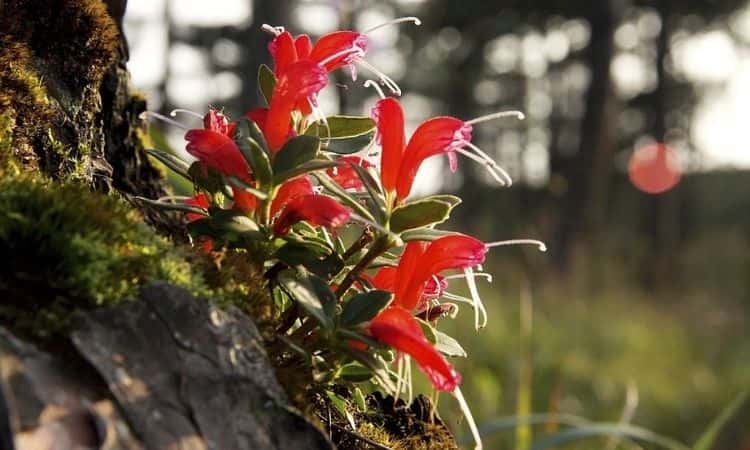
Hydroponics
Aeschynanthus also thrives in hydroponics, but there are some things to consider. It should be avoided to change existing plants from soil to hydroponics. It is better to cut fresh cuttings and let them root already in the hydro pot where they will stay in the end.
If you want to repot a plant that has been cultivated in the soil in hydroponics, you should remove all soil from the plant, e.g. by washing out the root ball. If soil remains on the plant, this will inevitably lead to rotting and in the worst case to the loss of the plant.
Until rooting, appropriate evaporation protection is recommended, e.g. from a translucent film. Equally important is a low level of the nutrient solution so that the roots do not rot and can be supplied with sufficient oxygen. A low nutrient solution or water level can be ensured or monitored with the help of a water level indicator for hydro pots.
Overwintering
While the Aeschynanthus prefers temperatures between 20 and 25 degrees Celsius from March to August, it has a resting period in winter, when it can be much cooler and drier, although temperatures should not fall below 12 degrees. For plants that are already a little older, the formation of flowers or buds can be stimulated or promoted by keeping the plants concerned significantly drier during the winter or from February for about two months at ambient temperatures between 12 and 15 degrees.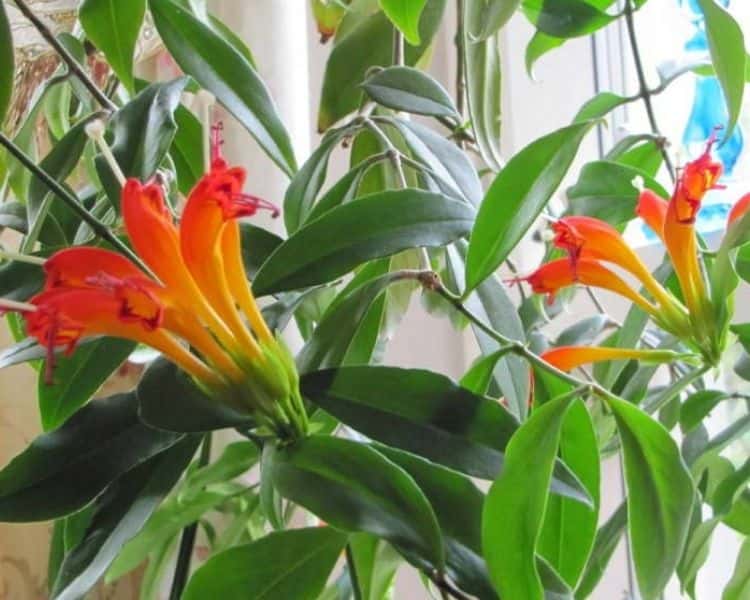
When cultivated under warm and humid conditions with temperatures of about 22 degrees, Aeschynanthus does not usually hibernate and grows all year round. However, the observance of a dormancy period is decisive for bud formation and as a result should be observed as far as possible.
Cutting
- Aeschynanthus normally does not need pruning.
- If too many shoots have formed, some can be cut out.
- This plant usually ages with age.
- Then you should consider pruning it back vigorously.
- It is better to grow new plants immediately with the help of cuttings.
- Damaged and diseased shoots should be removed regularly.

Repotting
As soon as the root area fills the entire pot or the roots are already growing out of the bottom of the pot, it is time to report the Aeschynanthus. Usually, it is possible to report it all year round, but this is not advisable, because if buds have already formed, the plant could discard them by repotting.
It is best to report in early spring or autumn after flowering. The new pot should be only slightly larger than the old one. However, you can also use the old one again if you shake the old soil out of the root ball and cut the roots back by about a third. It is important to have a thick drainage layer again, which you put into the pot as the lowest layer. On top of this layer comes the substrate in which the plant is placed. Water well after repotting.
The propagation of cuttings can be done all year round. To do this, one cuts head cuttings about 10-15 cm long and then places them in small pots in a mixture of sharp sand and peat in equal parts, 2-3 pieces at a time. The soil temperature should be between 25 and 30 degrees. When propagating in winter, it makes sense to place the pots on a radiator.
Once the cuttings are in place, put a translucent plastic bag over the cuttings or the pots to ensure a constant high humidity. Then place them in a bright but not fully sunny place at normal room temperature. If the cuttings show the first shoots, this is a sign that roots have formed.
Now the plastic bag can be removed and watered moderately. The pot ball should always be evenly moist. After a further 1-2 weeks, the young plants can be transplanted into their final plant container and cultivated further like fully-grown plants.
Sowing
The best way to propagate the Aeschynanthus is to use cuttings but sowing is also possible. Before sowing the seeds, it is advisable to scarify them briefly, which should facilitate germination. The best way to sow the seeds is to use a standard mini-greenhouse, but translucent foil will usually do. Fill the respective sowing container with soil, spread the seeds on it, and cover them lightly with soil.
Commercial cactus soil or young plant soil is very suitable for sowing. Now the substrate is moistened and the planter is covered with foil. This should be aired briefly every day to prevent mold and rot. It can then take a few weeks or even several months until germination, depending on the quality of the seeds.
Pests: Aphids
If an infestation with aphids has been detected, one should act quickly to prevent it from spreading. First of all, the plant in question should be isolated to prevent it from spreading to neighboring plants. In case of a slight infestation, it may be sufficient to spray the plant with a stronger water jet.
In the case of an advanced infestation, you can mix water and detergent in a ratio of 8:1 and spray the plant with it using an atomizer or a standard spray bottle. The substrate should be protected beforehand by a cover to prevent this mixture from reaching the soil. The plant should also not be placed in the sun. Leave it to stand for one day and shower it thoroughly with clear water the next day. If this does not help, specialist dealers offer appropriate sprays.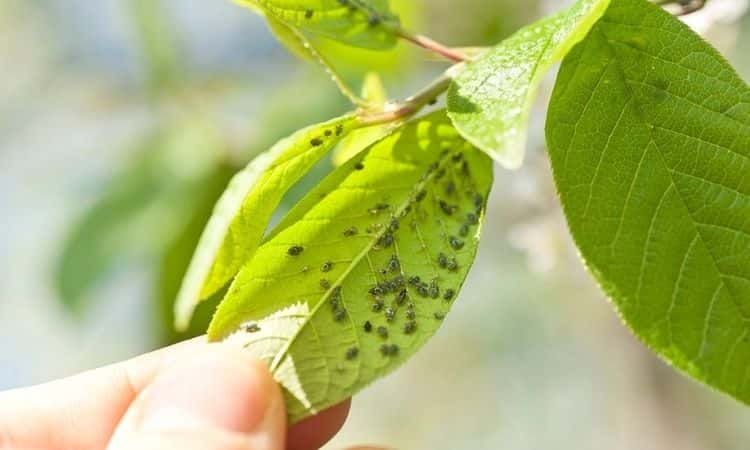
Spider mites
Deformed, blotchy leaves and fine white webs on the plant indicate spider mites, a typical winter pest. They feel particularly comfortable in warm, dry air. In the case of a slight infestation, it is usually helpful to spray the plant. The substrate should be covered. To combat a more severe infestation, certain types of predatory mites can be used or special spray agents from specialist dealers.